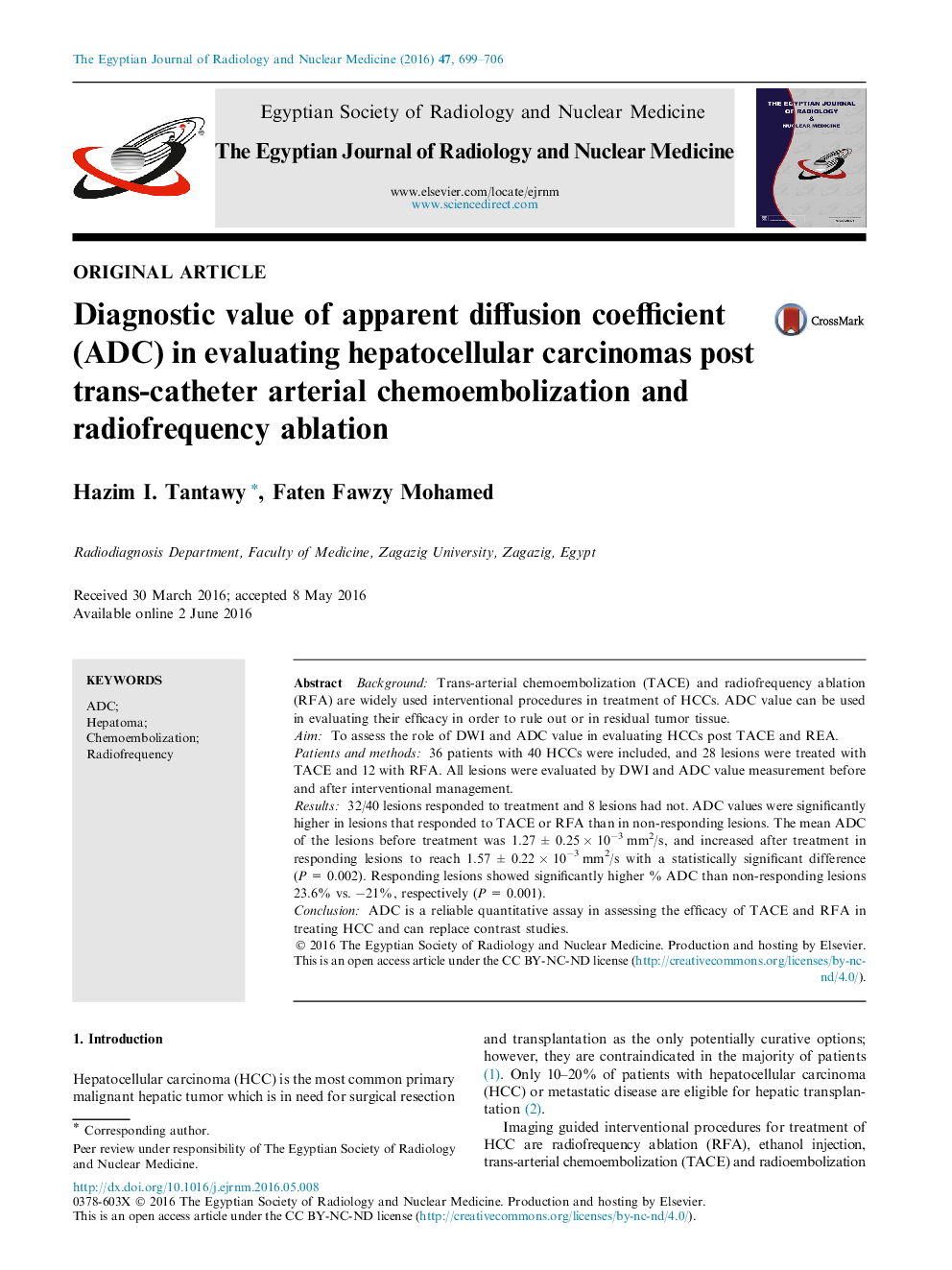| Article ID | Journal | Published Year | Pages | File Type |
|---|---|---|---|---|
| 4223982 | The Egyptian Journal of Radiology and Nuclear Medicine | 2016 | 8 Pages |
BackgroundTrans-arterial chemoembolization (TACE) and radiofrequency ablation (RFA) are widely used interventional procedures in treatment of HCCs. ADC value can be used in evaluating their efficacy in order to rule out or in residual tumor tissue.AimTo assess the role of DWI and ADC value in evaluating HCCs post TACE and REA.Patients and methods36 patients with 40 HCCs were included, and 28 lesions were treated with TACE and 12 with RFA. All lesions were evaluated by DWI and ADC value measurement before and after interventional management.Results32/40 lesions responded to treatment and 8 lesions had not. ADC values were significantly higher in lesions that responded to TACE or RFA than in non-responding lesions. The mean ADC of the lesions before treatment was 1.27 ± 0.25 × 10−3 mm2/s, and increased after treatment in responding lesions to reach 1.57 ± 0.22 × 10−3 mm2/s with a statistically significant difference (P = 0.002). Responding lesions showed significantly higher % ADC than non-responding lesions 23.6% vs. −21%, respectively (P = 0.001).ConclusionADC is a reliable quantitative assay in assessing the efficacy of TACE and RFA in treating HCC and can replace contrast studies.
